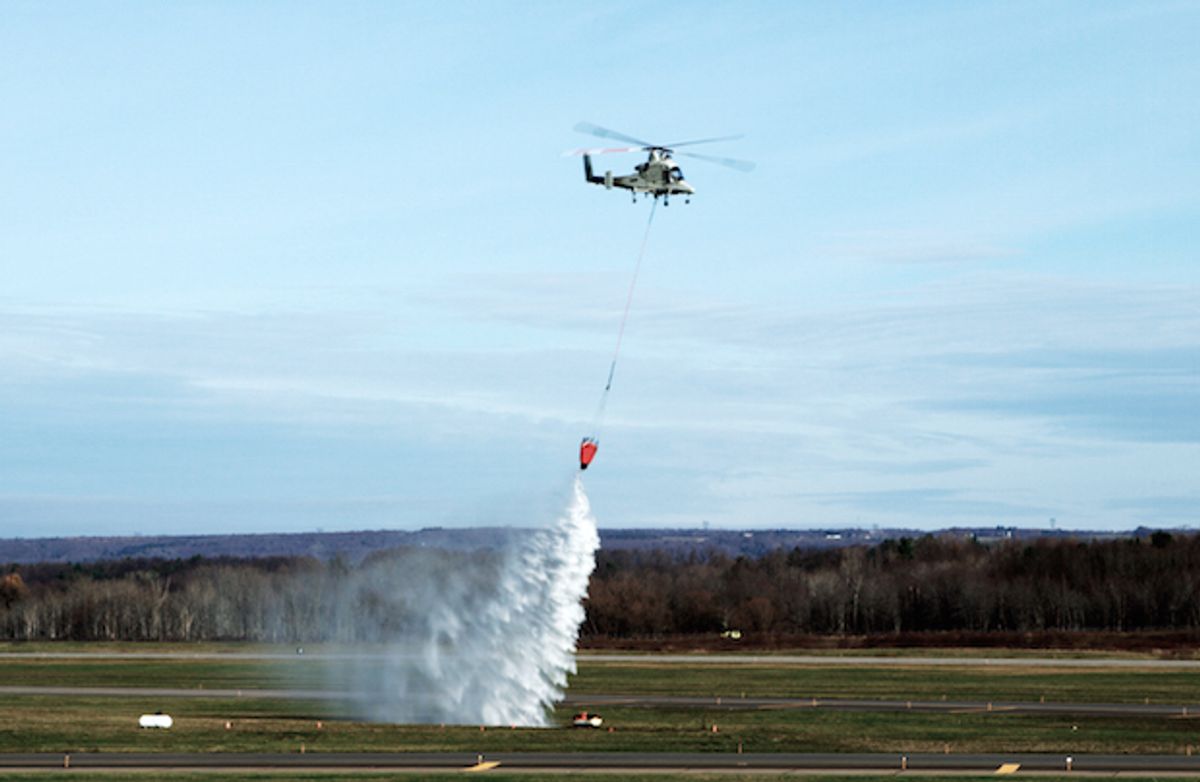Last year, Lockheed Martin demonstrated (semi) autonomous firefighting capabilities with an unmanned K-MAX cargo helicopter and a small quadrotor. There were still humans in the loop, though, and the whole test was carefully monitored to make sure that there were no conflicts with other aircraft in the area. Last month, Lockheed held another firefighting demo, this time with even more autonomy and real-time integration with air traffic control.
Usually, when big drones are doing big drone stuff, the Federal Aviation Administration sets up a Temporary Flight Restriction (TFR) around them, and air traffic control makes sure that no other aircraft get close. This is a good way of maintaining safety, but it’s super annoying for pilots, because it can turn straight line routes into slaloms. To be successful, unmanned aircraft systems (UAS) are going to have to learn how to play nice with other aircraft, and that means talking to air traffic control just like human pilots do.

During Lockheed’s firefighting demo, both the K-MAX unmanned helicopter and Stalker XE fixed-wing drone used experimental UAS traffic management capabilities to maintain real-time communications with the local air traffic control system. This likely includes information like “here I am” and “here’s where I’d like to go,” along with an interactive component that allows the drones to respond to basic instructions from controllers.
For the actual firefighting part of the demo, the Stalker XE drone used its infrared camera to identify the fire, and then relayed its location to the autonomous K-MAX helicopter, which nailed the fire with a well-targeted water drop:
Fire spotting (and remote firefighting in general) is an excellent task for drones. It’s important to catch fires as soon as possible, since smaller fires are easier to manage, but the best we can do right now is to send out humans in light aircraft to wander around looking for smoke. Midsize fixed-wing drones could easily take over this task, covering enormous areas far more than humans can, equipped with dedicated fire spotting sensors to make them more effective as well. And since the drones would be operating only in remote areas, it wouldn’t be too much of a burden to our air traffic control infrastructure.
The Stalker XE can fly for 8 hours at a time, day and night and in all weather, and the K-MAX is also capable of anytime, all-weather operation, meaning that it could probably conduct water drops in the middle of a monsoon, if you wanted it to for some reason. But seriously, having robots like these available could mean that human firefighters on the ground get triple the amount of aerial support that they do now, relying on manned aircraft, which leads to fewer fires as well as increased safety for the people fighting them.
[ Lockheed Martin ]
Evan Ackerman is a senior editor at IEEE Spectrum. Since 2007, he has written over 6,000 articles on robotics and technology. He has a degree in Martian geology and is excellent at playing bagpipes.



